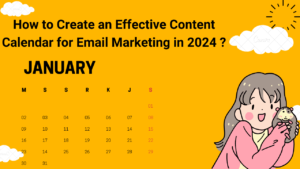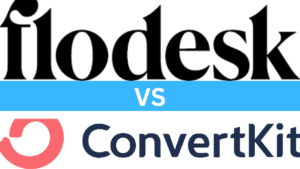Introduction
Creating an effective email marketing campaign calendar is crucial for ensuring your emails reach the right audience at the right time. In this post, we’ll explore how a well-organized calendar can streamline your campaigns, boost engagement, and align your email marketing efforts with your overall strategy. Whether you’re new to email marketing or looking to refine your approach, this guide will provide you with the tools, tips, and best practices needed to build a powerful email marketing campaign calendar.
What is an Email Marketing Campaign Calendar?
An email marketing campaign calendar is a detailed plan that outlines the timing and content of your email marketing efforts. It acts as a roadmap, guiding you on when to send emails, what type of content to include, and which audience segments to target. This calendar is essential for staying organized and ensuring that your email marketing strategy is cohesive and aligned with your business goals.
The primary purpose of an email marketing campaign calendar is to provide structure to your campaigns.
By planning ahead, you can schedule emails to coincide with important dates, such as product launches, holidays, or special promotions. This helps you maintain consistency in your communication, making sure that your audience receives the right message at the right time.
Creating a campaign calendar also allows you to balance different types of emails, such as promotional offers, newsletters, and informational content. This mix keeps your audience engaged without overwhelming them with repetitive messaging. More over, it enables you to plan for seasonality, ensuring that your emails are relevant and timely throughout the year.
Another key advantage of using an email marketing campaign calendar is that it helps you track and measure the success of your campaigns.
By having a clear overview of what’s been sent and what’s coming up, you can analyze performance metrics, make data-driven adjustments, and continuously optimize your strategy for better results.
How to Create an Effective Email Marketing Campaign Calendar
Creating an effective email marketing campaign calendar is essential for executing a successful email strategy. This calendar will help you plan your email content, schedule your campaigns, and ensure that your messaging aligns with your overall marketing goals.
Here’s a step-by-step guide to help you build an email marketing campaign calendar that drives results.
1. Define Your Email Marketing Goals
Before you start scheduling emails, it’s crucial to identify your goals. Are you aiming to increase sales, boost engagement, or build brand awareness? Clear goals will guide the content and frequency of your campaigns. For example, if your goal is to drive conversions, your calendar should include more promotional emails.
2. Choose the Right Tools
Selecting the right tools to create and manage your email marketing campaign calendar is important. Tools like Mailchimp, HubSpot, or even a simple Google Calendar can help you organize your campaigns. These tools often come with features that allow you to set reminders, track campaign performance, and collaborate with your team.
3. Plan Your Campaigns in Advance
Map out your email campaigns for the entire year, focusing on key dates such as holidays, product launches, and seasonal promotions. Planning in advance ensures that you won’t miss important opportunities and allows for better content preparation.
4. Balance Your Email Types
A well rounded campaign calendar includes a mix of email types, such as promotional offers, newsletters, and educational content. This variety keeps your audience engaged and prevents them from feeling overwhelmed by too many sales-focused messages.
5. Segment Your Audience
Segmenting your audience is a critical step in creating an effective email marketing campaign calendar.
By dividing your audience into groups based on behavior, demographics, or interests, you can send more personalized and relevant emails. Your calendar should reflect these segments by scheduling different content for different groups.
6. Schedule Consistently
Consistency is key in email marketing. Decide how often you’ll send emails weekly, bi weekly, or monthly and stick to that schedule. Consistency helps build trust with your audience, making them more likely to engage with your content.
7. Monitor and Adjust
After implementing your calendar, regularly monitor the performance of your campaigns. Use analytics to track open rates, click-through rates, and conversions. Based on this data, make adjustments to your calendar as needed to improve results.
Best Practices for Managing Your Email Marketing Campaign Calendar
Managing your email marketing campaign calendar effectively is key to ensuring that your campaigns run smoothly and deliver the desired results.
By following best practices, you can optimize your calendar for maximum efficiency, engagement, and ROI.
Here are some best practices to help you manage your email marketing campaign calendar successfully.
1. Maintain Consistency in Your Schedule
Consistency is crucial in email marketing. Whether you’re sending weekly newsletters, monthly promotions, or seasonal updates, sticking to a regular schedule helps build trust with your audience. A consistent schedule ensures that your subscribers know when to expect your emails, which can improve open rates and overall engagement.
2. Use Analytics to Refine Your Strategy
Regularly analyze the performance of your email campaigns to see what’s working and what’s not. Metrics like open rates, click-through rates, and conversions can provide valuable insights. Use this data to make informed adjustments to your calendar.
For example, if you notice that emails sent on certain days perform better, consider adjusting your schedule accordingly.
3. Incorporate Seasonal and Holiday Campaigns
Leverage seasonal events and holidays by incorporating them into your email marketing campaign calendar. These campaigns can generate higher engagement since they are timely and relevant. Plan these campaigns well in advance to ensure you have the time to create compelling content that resonates with your audience.
4. Ensure Compliance with Regulations
Compliance with email marketing regulations like GDPR and CAN-SPAM is essential for maintaining trust and avoiding penalties. Make sure that your email marketing campaign calendar includes reminders to check that all emails are compliant, particularly if you’re launching campaigns targeting new markets or regions.
5. Stay Flexible and Ready to Adapt
While planning is important, flexibility is equally crucial. Be prepared to adjust your campaign calendar in response to unexpected events, market changes, or new opportunities. A flexible approach allows you to stay relevant and responsive, ensuring that your campaigns remain effective even when circumstances change.
6. Collaborate with Your Team
Effective management of your email marketing campaign calendar requires collaboration. Involve your team in the planning process, and make sure everyone is aligned with the schedule and goals. Use tools that allow for easy sharing and collaboration to keep everyone on the same page.
7. Document Everything
Keep detailed records of your email campaigns, including dates, content, target audiences, and performance metrics. This documentation will help you review past campaigns, identify patterns, and plan more effectively for the future. It also ensures that your team can easily reference past campaigns if needed.
Examples of High-Performing Email Marketing Campaign Calendars
Seeing real world examples of high performing email marketing campaign calendars can inspire and guide you in creating your own. These examples demonstrate how different companies strategically plan their email campaigns to maximize engagement, conversions, and overall marketing success.
Let’s explore some examples that showcase effective use of email marketing campaign calendars.
1. Seasonal Retail Campaign Calendar
A retail company planned its email marketing campaign calendar around key shopping seasons, such as Black Friday, Cyber Monday, and the holiday season. They scheduled a mix of promotional emails, product recommendations, and exclusive offers to build anticipation and drive sales. Leading up to each major shopping event, the calendar included teaser emails, followed by flash sales and last-minute deals.
Why It Worked:
- Timely Content: The calendar was perfectly timed with high demand shopping periods.
- Diverse Email Types: By mixing different types of emails, the company kept the content fresh and engaging.
- Build-Up Strategy: Teaser emails created anticipation, leading to a higher open rate during the sales period.
2. B2B Webinar Series Campaign Calendar
A B2B company created an email marketing campaign calendar centered around a monthly webinar series. Each month, the calendar included an initial invitation email, followed by reminder emails and a post-webinar follow up with key takeaways and additional resources. The campaign targeted different segments based on the webinar topic, ensuring that the content was relevant to each audience.
Why It Worked:
- Targeted Segmentation: The calendar’s segmented approach ensured that the right audience received the right content.
- Engagement Focus: By including reminders and follow ups, the company kept the audience engaged throughout the series.
- Value-Driven Content: The post-webinar follow-ups added value by providing additional resources, enhancing the overall experience.
3. Monthly Newsletter Campaign Calendar
A nonprofit organization used an email marketing campaign calendar to manage its monthly newsletter distribution. The calendar was structured to include a combination of donor updates, success stories, and upcoming event announcements. The organization also strategically scheduled appeals for donations during times when donor engagement was historically high.
Why It Worked:
- Consistent Communication: The regular schedule of monthly newsletters helped build and maintain a strong relationship with donors.
- Relevant Content: The calendar ensured that each newsletter was timely and relevant, keeping the audience informed and engaged.
- Strategic Appeals: By aligning donation appeals with periods of high engagement, the organization optimized its fundraising efforts.
4. Product Launch Campaign Calendar
A tech company planned its email marketing campaign calendar around a new product launch. The calendar included a series of pre launch teasers, launch-day announcements, and post launch follow ups with customer testimonials and product tutorials. The emails were carefully timed to build excitement and drive early adoption of the new product.
Why It Worked:
- Build-Up Strategy: The pre-launch teasers effectively generated anticipation and excitement.
- Launch Day Impact: The launch-day emails were timed to create a sense of urgency, driving immediate action.
- Post-Launch Support: Follow up emails provided ongoing value, encouraging customers to fully engage with the new product.
5. Educational Series Campaign Calendar
An online education platform used an email marketing campaign calendar to deliver a weekly educational series to subscribers. Each week, the calendar included a new lesson, along with related resources and assignments. The campaign was designed to keep subscribers engaged over several months, gradually building their knowledge and skills.
Why It Worked:
- Ongoing Engagement: The weekly cadence kept subscribers returning for more, increasing long term engagement.
- Structured Learning: The calendar provided a clear learning path, helping subscribers progress systematically.
- Supplemental Content: Additional resources and assignments added depth, enhancing the overall learning experience.
Tools and Templates for Building Your Email Marketing Campaign Calendar
Creating an effective email marketing campaign calendar is much easier when you have the right tools and templates at your disposal. These resources can help you plan, organize, and execute your campaigns more efficiently, ensuring that your emails are sent at the right time and to the right audience.
Here’s a guide to some of the best tools and templates for building your email marketing campaign calendar.
1. Email Marketing Platforms
Most email marketing platforms come with built in tools to help you create and manage your campaign calendar.
Here are some of the most popular options:
- Mailchimp: Mailchimp offers a robust calendar feature that lets you schedule and automate your emails. Its drag-and-drop interface makes it easy to plan your campaigns visually.
- HubSpot: HubSpot’s email marketing tools include a campaign calendar that integrates with your CRM, allowing you to align your email campaigns with other marketing activities.
- Constant Contact: This platform provides a simple calendar view to help you schedule and track your email campaigns, making it ideal for small businesses.
2. Project Management Tools
Project management tools can be highly effective for organizing your email marketing campaign calendar, especially when working with a team. Some top choices include:
- Trello: Trello’s board system is perfect for visualizing your email campaign timeline. You can create cards for each email, assign due dates, and move them through stages like planning, drafting, and sending.
- Asana: Asana offers a calendar view that allows you to plan your email campaigns alongside other marketing tasks, ensuring everything stays on track.
- Monday.com: Monday.com’s customizable templates can be tailored to fit your email marketing needs, providing a clear overview of your campaign schedule.
3. Content Calendar Templates
If you prefer to plan your email marketing campaigns manually or need a quick start, content calendar templates can be a valuable resource.
Here are some options:
- Google Sheets Template: Google Sheets offers free templates that you can customize for your email marketing needs. You can create columns for dates, email types, target segments, and more.
- Excel Templates: Similar to Google Sheets, Excel provides versatile templates that can be tailored to fit your email campaign schedule. These templates often include features like conditional formatting to highlight important dates.
- Printable Templates: For those who prefer a more tactile approach, printable content calendar templates allow you to plan your campaigns on paper, which can be useful for brainstorming sessions or team meetings.
4. Social Media and Marketing Calendar Tools
Some tools designed for social media or broader marketing calendars can also be adapted for email marketing. These tools provide a centralized place to manage all your marketing activities:
- CoSchedule: CoSchedule’s marketing calendar tool is versatile enough to include your email campaigns alongside social media posts, blog schedules, and other marketing activities.
- Buffer: While primarily a social media tool, Buffer’s scheduling features can be adapted to manage email campaign timelines as part of your overall marketing strategy.
5. Email Marketing Calendar Plugins and Add-Ons
If you’re using specific platforms like WordPress or integrating your email marketing with other tools, plugins, and add on can be very helpful:
- WordPress Editorial Calendar: This plugin can be used to schedule and manage email campaigns if you’re using WordPress for your blog or website.
- Zapier Integrations: Zapier allows you to connect your email marketing platform with other tools, helping automate the scheduling and updating of your campaign calendar.
Summarry
By leveraging these tools and templates, you can streamline the process of building and managing your email marketing campaign calendar. Whether you prefer an all in one marketing platform, a project management tool, or a simple template, having the right resources in place will help you stay organized and ensure your campaigns are executed effectively.
Final Thoughts
Creating and maintaining an effective email marketing campaign calendar is a powerful strategy that can significantly enhance the success of your email marketing efforts. It helps you stay organized, ensures your messages are timely and relevant, and allows you to align your campaigns with broader marketing goals. Whether you’re a small business or a large enterprise, the benefits of a well planned email marketing campaign calendar are undeniable.
As you build your own campaign calendar, remember to utilize the right tools and templates to simplify the process. Tailor your calendar to fit your specific needs, whether it’s for a product launch, seasonal promotions, or ongoing newsletters.
By incorporating best practices and continuously optimizing your calendar, you’ll be better positioned to deliver content that resonates with your audience and drives meaningful results.
In the ever evolving world of digital marketing, staying ahead requires planning, consistency, and adaptability. An email marketing campaign calendar is your roadmap to success, helping you navigate the complexities of email marketing with confidence and precision.
Start planning today, and watch as your campaigns achieve greater engagement, higher conversion rates, and a stronger connection with your audience.




